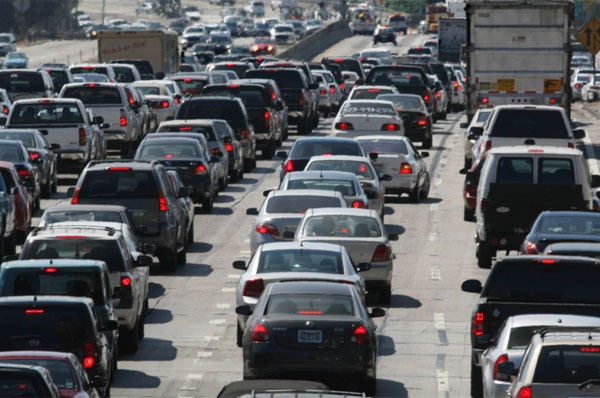Results 1 to 1 of 1
Thread Information
Users Browsing this Thread
There are currently 1 users browsing this thread. (0 members and 1 guests)
-
07-29-2013, 04:41 AM #1Junior Member

- Join Date
- Jul 2013
- Posts
- 19
Congested Roads and Traffic
Traffic frustration, wasted petrol as the engine runs while the car is stalled in traffic, longer commuting times, more noise, smog, pollution, car accidents.
The annual arrival of 1.5 million legal and illegal immigrants is overburdening our already crowded roadways. Americans are spending more time sitting in traffic than ever before: in a typical day we spend 46 minutes commuting to and from work.
The cost of traffic congestion is immense. In 2005, congestion cost $78.2 billion in America’s 437 urban areas, up 7 percent from 2004. Population growth and the ensuing urban sprawl is worsening the situation, resulting in year-after-year increases in wasted fuel and time spent commuting.
Our nation’s ecosystems are also burdened by the crowding of our roadways. By themselves, the 8.5 million miles of impermeable roadway that traverses the U.S. cause habitat destruction. In addition, America’s fleet of personal vehicles floods our waterways with pollutants and is the major contributor to urban smog.
The average urban driver now spends more than 100 hours commuting to work, compared to just 16 in 1982--an increase of 525 percent. (Stephen Buckner and Joanna Gonzalez, Americans Spend More Than 100 Hours Commuting to Work Each Year, Census Bureau Reports, U.S. Census Bureau News, March 30, 2005). The Texas Transportation Institute's annual study of traffic congestion in urban areas found that in 2005 Americans spent 4.2 billion hours delayed in traffic and wasted 2.9 billion gallons of fuel.
California With five of the nation's 20 most congested metro areas, Californians wasted 871 million hours and 673.5 million gallons of fuel sitting in traffic in 2005. In the San Fernando Valley area, the average morning rush-hour speed of 31 mph is expected to fall to 16 mph by 2025 as new drivers crowd the already saturated roads. Los Angeles Los Angeles has been the most traffic-choked urban area in the country for 20 years running. State officials say the number of miles driven on Los Angeles and Orange County roads will increase 40 percent by 2020, due in large part to the sustained influx of immigrants into the region’s suburbs. Sacramento Even with $15 billion in planned road improvements, congestion will increase 400 percent by 2020.
Traffic congestion in Atlanta has become so bad that the Chamber of Commerce called it the greatest threat to the city's economic prosperity. The city, which has seen a large influx of hispanic immigrants in recent decades, and is now known as the “Poster Child of Sprawl,” is among the deadliest for pedestrians and motorists. Congestion on the overcrowded roads results in a traffic accident every 2.8 minutes in the metro area. The accidents further aggravate congestion, and cost $4.7 billion per year.
A new report by famed researcher Edwin Rubenstein exposed the costs of unending migration into the U.S. at: “$1.6 Trillion Needed to Repair and Maintain Nation's Hospitals, Schools, Parks, Water Supply, Bridges, and Basic Infrastructures.”
Immigration will be responsible for more than 80 percent of the spending needed to expand infrastructure capability between now and mid-century, according to the report. Ed Rubenstein examines 15 categories of infrastructure: airports, border security, bridges, dams and levees, electricity (the power grids), hazardous waste removal, hospitals, mass transit, parks and recreation facilities, ports and navigable waterways, public schools, railroads, roads and highways, solid waste and trash, and water and sewer systems,” reported Fran Griffin of Griffin Communications. “The American Society of Civil Engineers estimates that $1.6 trillion dollars is needed to repair and maintain U.S. infrastructure in next 5 years. The massive influx of immigrants into the U.S. is increasing the demands on an overburdened infrastructure, much of which was built shortly after World War II and is outdated and deteriorating.”
Depending on where you live, this might not be an issue for you. But in some regions/cities, the traffic is horrible.
This is what it looks like in Los Angeles, for example:

The traffic is just horrible in southern California. The roads just were not meant for so many cars, and it is difficult to widen the roads (they have already been widened several times before) because the roads are right up against peoples houses. And the new developments that have been built in California are very high density- tiny yards with the houses almost right up against each other. There are just too many people! Here is a picture from Orange County:


No, there is no big car accident up ahead. This is just how it is in the morning and the evening right after everyone is driving home from work. Fridays are even worse!
Here is the congested roads in Atlanta, Georgia:

http://www.thedenverchannel.com/news...-of-car-wrecks
For some people, it might be difficult to imagine being stuck in the congestion for several hours every day as one tries to get to and from their job. Increasing population from immigration certainly takes its toll on many city and suburban residents, in the form of wasted time and frustration.


 2Likes
2Likes LinkBack URL
LinkBack URL About LinkBacks
About LinkBacks




 Reply With Quote
Reply With Quote

We must push through early Thurs at this critical moment
04-24-2024, 10:44 PM in illegal immigration Announcements